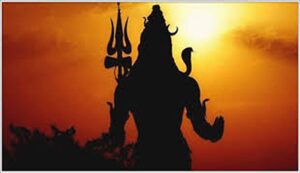Story of Surya Dev: Know why there was an uproar with the birth of Suryadev, whom did Mahadev dismember with his trident
Story of Surya Dev: In Hinduism, the Sun God is also known as Bhaskara and Aditya. The Sun God and the Moon are considered the most visible deities on Earth, visible to humans in their highest divine form. In the Vedas, Bhaskara is described as the soul of the universe, as all living and non-living things derive life from this divine light. The Sun God is the source of life, energy, and light on Earth. The worship and devotion to the Sun God has been prevalent in India since the Vedic period. The Vedas and Puranas describe his radiance, influence, worship, and mantras in detail. In astrology, the Sun is considered the king of the nine planets.

The Origin of the Sun God
The Markandeya Purana tells that at the beginning of the universe, there was complete darkness and no light. At that very moment, Lord Brahma emerged from a lotus-like womb. The first word that emanated from Brahma’s lips was Om, a faint expression of the Sun God’s radiance. From this first word, the four Vedas were born through the four mouths of Brahma and merged into the divine light of Om.
The Eternal Cause of the Universe: Sun God and Vedic Light
The eternal cause of the universe is Aditya or Bhaskar. This Vedic light is the basis for the universe’s creation, sustenance, and destruction. Brahma requested Sun God to display his intense radiance in a restrained manner. Sun God gathered his power and assumed a subtle aura, maintaining balance in the universe. This balanced energy maintains the laws of life, movement, and creation. This divine power of Sun God infuses life and energy into every creature and object in the universe.
The Significance of Marichi, Sage Kashyapa, and Aditi
Marichi, son of Brahma, had Sage Kashyapa marry Aditi. This was the time when the universe’s creation and its complex structure began. Aditi performed extreme penance, which strengthened her inner energy and devotion. Her intense penance greatly pleased the Sun God.
Bhaskara Deva entered Aditi’s womb through his divine ray, Sushumna, and granted her prayers. Even while pregnant, Aditi continued observing rigorous fasts like Chandrayana, which accumulated divine energy in her womb. This energy was crucial not only for the child growing in her womb but also for the balance and structure of the entire universe.
Martanda and Vivasvan: The Divine Part of the Sun God
The child born from Aditi’s womb was called Martanda and was revered as Bhaskara. According to the Brahma Purana, the divine part of the Sun God born from Aditi’s womb is called Vivasvan. Vivasvan symbolizes Vedic power and cosmic laws. His divine light and energy established balance in all beings and the universe.
The presence of Vivasvan is what keeps the seasons, planets, constellations, and other celestial bodies moving on their prescribed paths. The radiance of the Sun God is what imparts knowledge, power, and dharma. Vivasvan plays a central role in the structure of the universe and the cycle of life.
Vedic Significance of the Sun God
The Sun God is not merely a celestial deity, but a symbol of cosmic energy, life, and balance. Worshiping, praising, and meditating on him brings energy, light, and knowledge into life. He is highly valued in Vedic scriptures because the Sun God governs the flow of creation, life, and time.
Worshiping the deity not only brings positive energy to personal life but also helps maintain cosmic laws and natural balance. His radiance governs the seasons, weather, and planetary movements. This is why, in Hinduism, the Sun God is considered the source of time, knowledge, and power.
